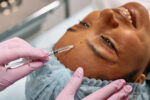Facts About Breast Cancer Treatment
- Treatment of breast cancer consists primarily of operation
- Following surgery, radiotherapy, chemotherapy and / or hormone ablation be topical
- Recurrence of breast cancer gives you primarily anti-hormone therapy or chemotherapy
General information on the treatment of breast cancer
There are many factors that come into play when choosing treatment. It is important that you participate in the decisions and decide what information you want.
The treatment will be decided by a team of doctors consisting of surgeons, oncologists (doctor specializing in chemotherapy and radiotherapy), radiologists and pathologists (physician specializing in tissue samples).
Treatment depends on the type of cancer that is about the size of the knot over your breasts, the severity tumor has (stage), it is a tumor that respond well to hormone treatment, you still menstruate and your general health.
Surgical treatment
The aim of surgery is to remove the tumor completely. In most cases you only need to remove the tumor and some of the tissue around without removing the entire breast (breast conserving surgery). In some cases it is necessary to remove the entire breast, if the node is very large, or if there are precursors to cancer elsewhere in the breast.
When there is breast-conserving surgery, always also have radiotherapy after surgery. Such combination therapy gives as good results as if one removes the entire breast.
In connection with surgery for removing the tumor also the lymph node in the axilla (skildevagtslymfeknuden). If there is spread to the lymph node is to perform a new operation, which removes all the lymph nodes in the armpit.
Right after surgery can raise chest and become red because of edema or infection. If there is surgery on the armpit, the arm can raise, and there may be pain and sensory disturbances.
Radiation treatment
Radiation is effective only in the areas hit by the rays and therefore radiation a local treatment (unlike chemotherapy, which acts throughout the body). Radiation therapy is usually given five days a week for 4-6 weeks. The radiation gives no immediate pain, but it can irritate the skin outshine area and cause a reaction similar to sunburn. In the longer term there may come stiffness of skin and tissue.
You always give radiation therapy after breast-conserving surgery for breast cancer. In special circumstances, the radiation used alone, but this is rarely sufficient or advisable. Although the surgeon is doing its best to remove all the cancer cells, there may be some back and it is these remaining cancer cells, the rays can remove. If the entire breast is removed, given radiotherapy to the chest wall during the surgical wound, if the tumor could not be removed completely. Patients with spread to lymph nodes in the armpit will also have radiotherapy to the nearest lymph nodes, behind the clavicle.
Radiation treatment starts when the consequences after the operation has healed, usually 3-4 weeks after surgery if there should be given chemotherapy. In patients who need chemotherapy begins radiation therapy ca. 2-3 weeks after the last chemo.
Chemotherapy, medical treatment
Chemotherapy is medicine to kill cancer cells or prevent cancer cells from growing. It is often given as a combination of several drugs. The different types of chemo has various side effects and the importance of thorough information before starting treatment.
Side effects of chemotherapy
Chemotherapy works unfortunately also harmful to the healthy and normal cells in your body. It is specifically the normal cells in the body that frequently changed out which chemotherapy damage. Those cells that are changed frequently are mainly blood cells – white and red blood cells and blood platelets but also cells in the mucous membranes, hair and skin. If the blood cells is too low, you have a higher risk of infections with bacteria (the white blood cells are an important part of infection defense), anemia (the number of red blood cells decreases), and decreased ability to stop bleeding (due to fewer platelets).
Other common side effects of chemotherapy are nausea and vomiting, loss of appetite, weakness and bodily and mental fatigue. These side effects are health workers in recent years become increasingly better at treating.
Most types of chemotherapy given directly into the blood once – eg. every 3 weeks. This cycle is then repeated a number of times, often 6 laps. Some types of chemotherapy given as a daily pill.
How Does chemo?
Kemo will work in most of the body, regardless of where the cancer cells are. Therefore one man, if there is a risk that the disease has spread, even if you can not show any metastases. Chemotherapy has value as an adjunct to radiation and surgery. In some cases, may be given chemotherapy even before surgical treatment for the tumor to pull together and to make it easier for the surgeon to remove the tumor.
Other types of medical treatment
There are also medications that can become relevant after surgery and radiation and are not considered chemotherapy. It is anti-hormone therapy, which may be relevant if the tumor is hormone sensitive. Anti-hormone therapy has relatively few side effects, and are used for up to five years after the tumor is removed.
Certain types of breast cancer is susceptible to treatment with specific antibodies directed either against cancer cells or from the blood vessels to supply the tumor.
There are several medical drugs in development, and they may provide additional help in cancer treatment. There is also the tendency for breast cancer disease is detected earlier, and it is thus easier to treat.







